Why Pink Moon? Colors Of The Moon in a Moonrise 23 July 2021
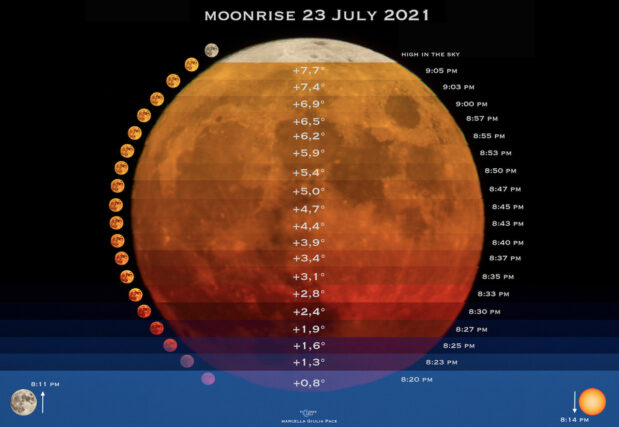
(Please, find the English version below)
In molti mi hanno chiesto: “Perché, nella mia “collezione di Lune” è presente una Luna rosa?
- Colors of the Moon
- Pink Moon, 23 July 2021 at 8:20 pm
La risposta sta nella Luna Piena del 23 Luglio 2021, sorta con una particolarità che può spiegare quando e perché si verifichi la Luna con questa insolita colorazione.
La Luna Piena del 23 luglio, sorse alle 8:11 pm, alla mia latitudine, mentre il Sole tramontò alle 8:14 pm.
Alla mia latitudine, la rifrazione anticipa il tramonto e ritarda l’alba di circa 2-3 minuti. Sole e Luna si sono trovati nel cielo allo stesso orario e alla stessa altezza dall’orizzonte.
Stavo aspettando proprio questa Luna Piena perché sapevo che la Luna così bassa sull’orizzonte, al tramonto del Sole, mi avrebbe permesso di fotografarla in molte più sfumature di colori rispetto alle altre Lune Piene.
Infatti quel giorno la Luna, oltre ad attraversare gli strati inferiori dell’atmosfera, che normalmente determinano colori diversi a partire dal rosso al giallo, attraversò diverse condizioni di luce (tramonto, crepuscolo…) e il suo colore iniziale tese al rosa acceso bellissimo della foto.
La Luna sorse alle 20:11 con il cielo ancora azzurro, la foschia non mostrava la Luna all’orizzonte marino, quindi dovetti aspettare circa 6 minuti, prima di vederla, per cui la composizione finale mostra in basso la fascia di cielo ancora azzurra che circonda la Luna e che si presentò di colore rosa alle 20:20
- Colors of the Moon in 40 minutes
- Pink Moon, 23 July 2021 at 8:20 pm
Perchè non osserviamo questa luna rosa?
– Questo colore rosa, contrastato dall’azzurro del cielo, è forse il più raro da vedere proprio perché è rara la circostanza in cui la Luna Piena attraversa questo specifico strato dell’atmosfera, con queste particolari condizioni di luce.
-Nel momento in cui la Luna sta sorgendo, siamo attratti ad osservare il tramonto del Sole.
-La sua luminosità non è sufficiente per essere evidente nel cielo e per attirare l’attenzione di spettatori.
Le strisce lunari sono state riprese a circa 2-3 minuti di intervallo e mostrano la variazione di colore sia della Luna che del cielo, fino alle 21:05.
Nella foto didattica ho inserito l’ora e i minuti di scatto e l’altezza dall’orizzonte e tante miniature della Luna in corrispondenza alle singole strisce.
Nella parte corrispondente alla parte superiore della foto, è la striscia di Luna con il colore che il satellite assume quando è alto nel cielo.
- Colors of the Moon in 40 minutes
Per la buona riuscita di questo esperimento, ho scelto di dare alla fotocamera impostazioni che mi avrebbero consentito di accompagnare a lungo il percorso della Luna senza la necessità di modificare le impostazioni di scatto, con lo stesso bilanciamento del bianco, assicurando la fedeltà di colore rispetto alla mutazione di colore visibile nella composizione finale.
Camera: Nikon D7100; 1/20 sec; f/6; ISO 100
Dalle 20:20 alle 20:40 la Luna cambiò colore con tante sfumature. Siamo, infatti, nella fascia oraria in cui il Sole vira dal tramonto al crepuscolo. Le gradazioni di colore di queste sfumature rimasero a lungo tra l’arancio e il giallo fino a raggiungere il bianco/grigio, colore tipico della Luna quando è alta in cielo.
- Pink Moon, 23 July 2021 at 8:20 pm
- 8:23 pm
- 8:25 pm
- 8:27 pm
- 8:30 pm
- 8:33 pm
Ricordiamo perché la Luna cambia colorazione per un osservatore terrestre:
**************************************************************
English version
Many people ask me: “Why is there a pink Moon in my collection of Moons?”
- Colors of the Moon
- Pink Moon, 23 July 2021 at 8:20 pm
The Full Moon of July 23 rose at 8:11 PM, in my latitude (Sicily), while the Sun set at 8:14 PM.
At my latitude, refraction anticipates sunset and delays sunrise by about 2-3 minutes. Sun and Moon were in the sky at the same time and at the same height from the horizon.
I was waiting for this Full Moon because I knew that the Moon so low on the horizon, at sunset, would allow me to photograph it in many more shades of colors than the other Full Moons.
In fact that day the Moon, in addition to passing through the lower layers of the atmosphere, which normally determine different colors starting from red to yellow, went through different light conditions (sunset, twilight …) and its initial color tended to bright pink beautiful photo.
The Moon rose at 8:11 PM with the sky still blue, the mist did not show the Moon on the marine horizon, so I had to wait about 6 minutes, before seeing it, so the final composition shows the sky band still blue at the bottom surrounding the Moon and which turned pink at 9:20 PM.
- Colors of the Moon in 40 minutes
-At that moment we turn our backs to watch the sun go down.
-Her brightness is not enough to be evident in the sky and to attract the attention of onlookers.
- Pink Moon, 23 July 2021 at 8:20 pm
The lunar stripes were filmed at about 2-3 minutes interval and show the color variation of both the Moon and the sky, until 9:05 PM.
In the didactic photo I inserted the hour and minutes of shooting and the height from the horizon and many miniatures of the Moon in correspondence to the individual strips. In the part corresponding to the upper part of the photo, is the strip of the Moon with the color that the satellite assumes when it is high in the sky.
For the success of this experiment, I chose to set the camera to accompany the Moon’s path for a long time, without the need to change the shooting settings, with the same white balance, ensuring color fidelity in relation to the visible color change in the final composition.
From 8:20 to 8:40 PM the Moon changed color with many shades. That’s the time slot in which the Sun turns from sunset to dusk. The color gradations of these shades remained for a long time between orange and yellow until they reached the white / gray, typical color of the Moon when it is high in the sky.
- Pink Moon, 23 July 2021 at 8:20 pm
- 8:23 pm
- 8:25 pm
- 8:27 pm
- 8:30 pm
- 8:33 pm
The Moon that rises 15 minutes after sunset, is more contrasted and therefore more purple as shown in this video:
https://apod.nasa.gov/apod/ap170713.html


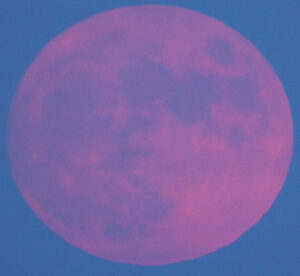
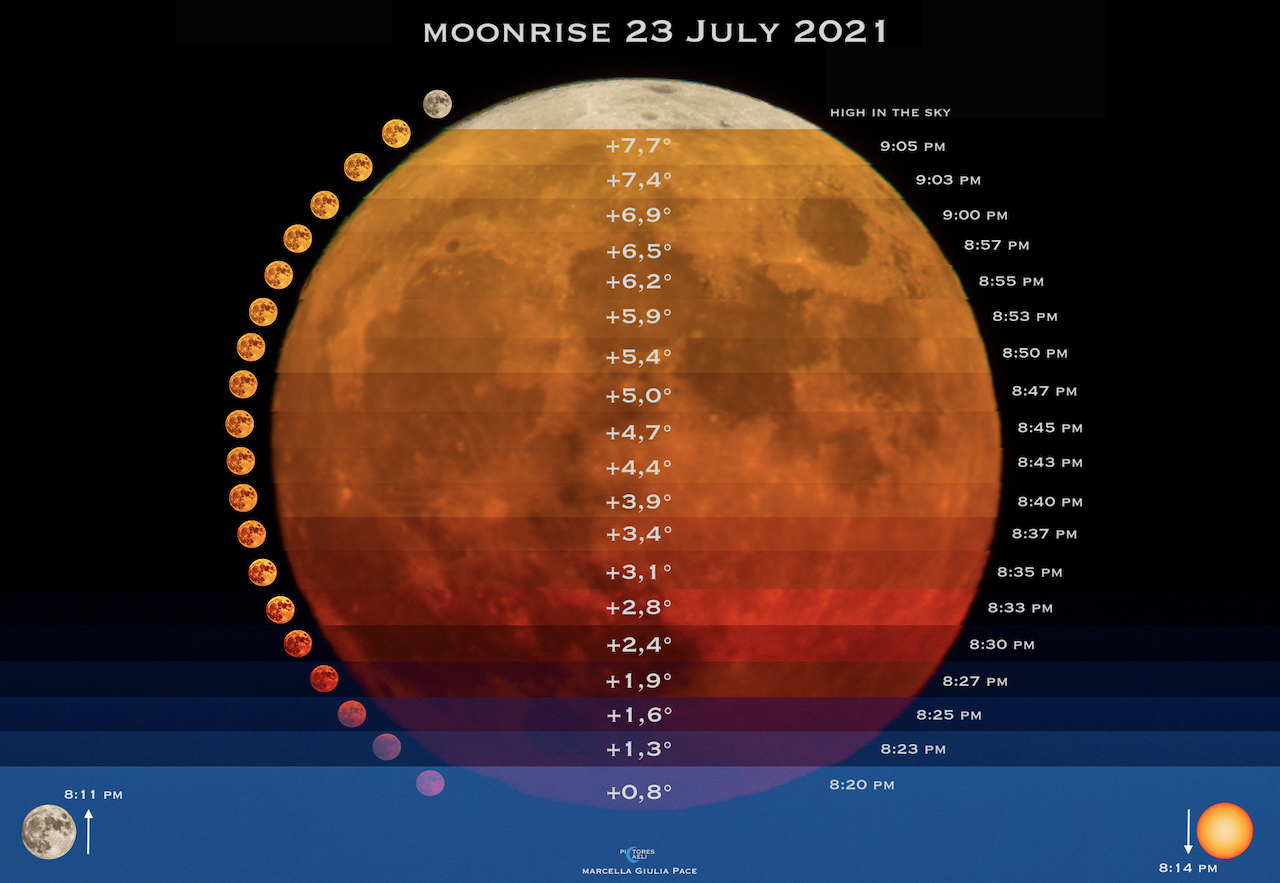
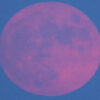
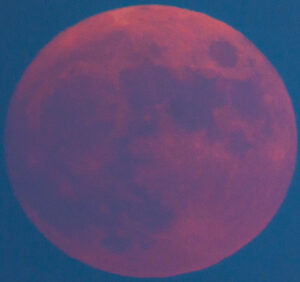
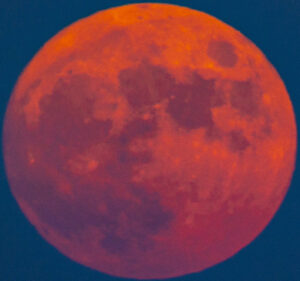
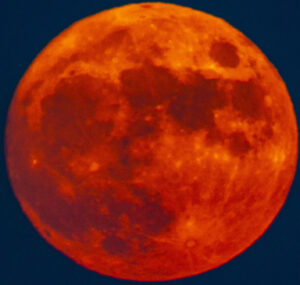
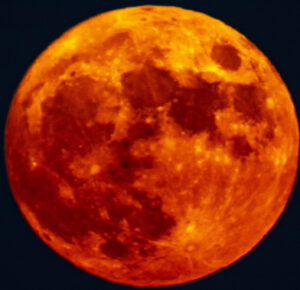
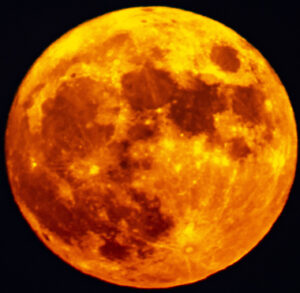
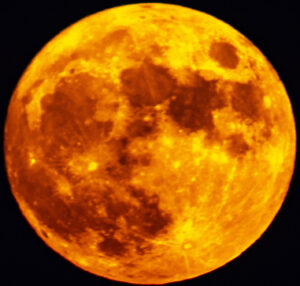
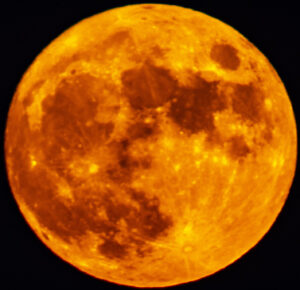
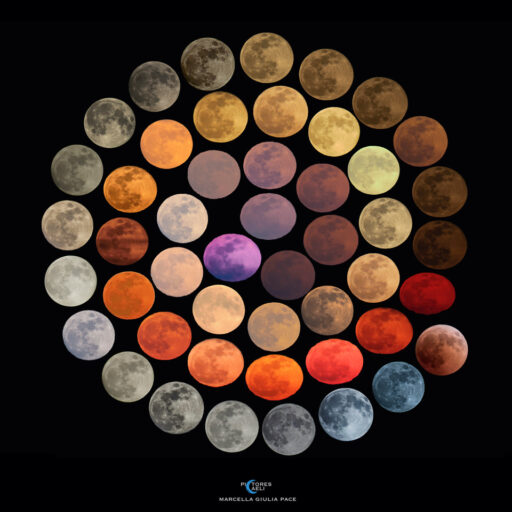
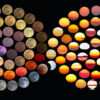
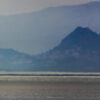
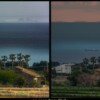
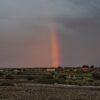
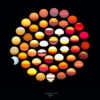
Christiane Poscio
brava, che lavoro fantastico! Grazie di encantare ii nostri occhi, la mente ed il cuore…
Marcella Giulia Pace
Grazie tante. 😀
Robert Dimeski
Beutyfull picture, but still i can’t find your name
Marcella Giulia Pace
Thanks! My name Is Marcella Giulia Pace
adreamer80
Non ho capito come l’immagine possa essere stata pubblicata dalla NASA l’11 novembre 2020 se la foto è stata scattata nel luglio 2021…